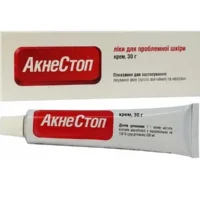Description
Famotidine (Famotidine) Lyophilisate for Solution for Injections 20 mg. №5 Vial
Ingredients
Active ingredient: Famotidine 20 mg per vial.
Dosage
Dosage: The usual dose is 20 mg injected intravenously or intramuscularly every 12 hours. Dosage may vary based on the condition being treated.
Indications
Indications: Famotidine injections are indicated for the treatment of active duodenal ulcers, active benign gastric ulcers, gastroesophageal reflux disease (GERD), and pathological hypersecretory conditions.
Contraindications
Contraindications: Do not use famotidine if you are allergic to famotidine or other acid reducers. Consult a healthcare provider before use if you have kidney problems.
Directions
Directions: Famotidine injections should be administered by a healthcare professional. Follow the instructions provided by your healthcare provider.
Scientific Evidence
Famotidine is a histamine-2 blocker that works by decreasing the amount of acid the stomach produces. Studies have shown that famotidine is effective in treating ulcers and GERD by reducing stomach acid levels and promoting healing of the gastrointestinal lining.
Clinical trials have demonstrated the efficacy of famotidine in managing acid-related disorders. Research published in the Journal of Gastroenterology highlighted the positive outcomes of famotidine therapy in patients with peptic ulcers.
Additional Information
It is important to inform your healthcare provider about any other medications you are taking before starting famotidine treatment. Famotidine may interact with certain drugs, leading to potential side effects or reduced efficacy.
Always follow the prescribed dosage and duration of treatment to achieve the best results with famotidine injections. If you experience any severe side effects or allergic reactions, seek immediate medical attention.





